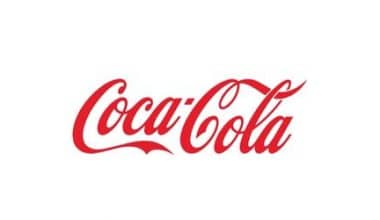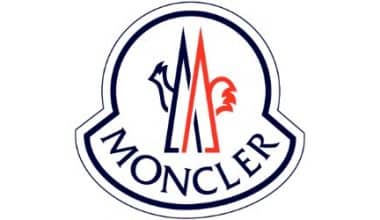Python is one of the best programming languages, and the truth is, people keep wondering why it is an open-source program. To think Python was a pet project born out of pure passion makes it different from other programming software. To date, the organization keeps releasing updated versions of the program. However, the same logo has been used since the launch of Python in 1980. The Python logo shows the image of two snakes, one in blue and the other in yellow. Of course, there is a story behind every logo, such as its history, its font or typeface, as well as its evolution. Wondering why the programming logo shows two snakes when it has nothing to do with reptiles? Let’s unravel this together.
Python logo
Given that the name of the program is Python, the presence of two snakes in the logo did not come as a surprise to me. Sincerely, the two snakes, with a head and a tail, are the only significant things about the logo. It’s funny to think about how neither the person who owns the program nor the program itself has anything to do with real Python. The Python logo is still used the same way it was when it first came out because it gives an accurate picture of the service and is easy to spot in a crowd.
The Python logo consists of two large reptiles with contrasting colors and patterns. Their bodies are rather small and point in a variety of directions, in contrast to their large and powerful heads. The green snake ascends and turns its head to the left, while the yellow snake “crawls” down and moves its head to the right. The pythons are separated by a narrow white stripe, which serves to highlight the narrow space that exists between them.
The heads are constructed using just perpendicular lines and acute angles. You won’t see any other facial expressions, including either the tongue or the nose, so don’t bother looking. It looks like a snake is staring straight ahead without blinking since there is only a clear line of the neck and eyes in the shape of a white ball. This gives the impression that the snake is not moving its head. The arrangement of the bodies contributes to the sensation of being under hypnosis. They are set up in a way that looks like the layout of Mayan cave paintings or other historical documents.
What Is The Meaning Behind The Python Logo?
Anyone who takes a close look at the Python logo will see two snakes in yellow and blue. If you design the logo so that it is not in focus, you will see another pattern that is significant: the blue snake resembles the letter P, and the yellow snake resembles the letter Y. Py is the most common and well-known abbreviation for the name Python, and it is formed by combining the two words. In reality, the two snakes’ designs reveal the first two letters of the Python programming software.
Python Logo Font
All of the letters in the Python wordmark are in lowercase and are written in a fine and elegant sans-serif font. The tops of the letters “T” and “H” are cut diagonally.
Python Logo Color
Tim Parkin used four colors for the Python logo. these are yellow, blue, white, and grey. The steel blue and mustard yellow colors of the logo are balanced by the calm gray of the name. The Python tricolor symbolizes creativity, professionalism, and a sense of stability and confidence.
Mustard
Hex color: #ffd845
RGB: 255 216 69
CMYK: 0 15 73 0
Pantone: PMS 115 C
Steel Blue
Hex color: #3f7daf
RGB: 63 125 175
CMYK: 64 29 0 31
Pantone: PMS 7690 C
Granite Gray
Hex color: #646464
RGB: 100 100 100
CMYK: 0 0 0 61
Pantone: PMS Cool Gray 10 C
Why is Python a Symbol of a Snake?
The name of the computer language that is used to create the Python logo was derived from the name of the language. When Guido van Rossum named the company, he wasn’t thinking about snakes at the time; he just liked the sound of the word. Instead, he was recalling the Monty Python’s Flying Circus television program in his head. In point of fact, at that very moment, he was reviewing the scripts for the well-known sketch program.
Can I Use the Python Logo?
Since the Python logo and other pictures linked with the brand are not trademarked, they are free to be used for non-commercial purposes on packaging, websites, and brochures. Even though it has not been registered, it is still considered a trademark belonging to Python; consequently, if you want to use it for any commercial purposes, you are required to get in touch with the owner of the trademark.
Who Created the Python Logo?
Dutch computer programmer Guido van Rossum is responsible for the creation of the Python programming language as well as the naming of the language. In addition to that, he designed the Python logo. He attended Universiteit van Amsterdam to earn his degree and has previous experience working for both Google and Dropbox Inc. It has a visual identity that is instantly recognizable and hasn’t changed much over time.
How Do You Make a Python Logo in Python?
There is a tutorial in the Python programming language that explains how to create a logo using Python. It gives the improvised figures, which appear like two snakes, the colors they require by using codes for coloring characters.
The Unofficial Python Logo

The unofficial python logo is a modification made by UI designer Jessica Williamson in May 2020. It is still the pictures of two snakes facing each other, however, the logo is more refined. The design has also garnered a lot of praise from members of the Python community more than 7K upvotes and +270 comments on r/Python. Jessica said her friend who was learning Python was the one who requested the upgrade.
One thing is certain, Jessica’s design is great but no one knows if the Python team will one day accept the logo as the official icon of their group. Till then, we keep our fingers crossed.
Python Programming
Python has always been at the top of the list of programming languages put together by TIOBE. The fact that it doesn’t require much work from the user is the main reason for its popularity. It can be used for a variety of things, from the construction of games and websites to the analysis of data and many other things.
Python is a general-purpose, interpreted programming language that is platform-independent. There are several benefits, including dynamic typing, garbage collection, and built-in memory management. Although it exemplifies the very height of technological development, its primary purpose is to facilitate the work of computer scientists. Writing code for any kind of project may be made much easier by using Python, which can be relied on to speed up the process. The product wasn’t sold to consumers for the first time until 1991, but its development began in the 1980s when the ABC programming language was used. The programming language Python has overcome all problems and is now run by the Python Software Foundation.
Of All Possible Names, Why Python?
Over the years, anyone who hears Python thinks of the programming software before a snake, unless you are somewhere close to a bush. However, it wasn’t so before now. It refers to a snake and a big one as that. So how did the brand arrive at the name Python?
The developer of Python Guido Van Rossum, The developer of Pytho enjoys a UK show known as Monty Python’s Flying Circus a lot. He gave the project the name “Python” because he was in a rather silly mood.
Founder
If the name Guido van Rossum is unfamiliar to you, there is a good chance that you are familiar with the widely used programming language Python. Guido Van Rossum developed Python out of fun. He named it after a UK show known as Monty Python. He was born on 31 January 1956. Guido is a Dutch programmer who was a “benevolent dictator for life” (BDFL) until July 12, 2018, when he resigned from that position. Guido Van Rossum stayed on as a member of the Python Steering Council up until 2019. We do not know what happened, but we do know that he removed his name from consideration for the presidential election in 2020.
Awards
Having considered his early life and career, let’s see some of the prestigious awards, and recognition Guido Van Rossum has received;
- The Free Software Foundation (FSF) gave Van Rossum the 2001 Award for the Advancement of Free Software for his work on Python at the 2002 FOSDEM conference in Brussels.
- He was given an NLUUG Award in May 2003.
- In 2006, the Association for Computing Machinery named him a Distinguished Engineer for his work.
- In 2018, the Computer History Museum made him a Fellow.
- In 2019, CWI honored him by giving him the name “Dijkstra Fellow.”
Work Life
Guido van Rossum currently works with Microsoft. I must confess, he has a productive work life. For every firm he worked with, there must be something stunning that he did while with them. Let’s check out some of these;
#1. Centrum Wiskunde & Informatica
Van Rossum wrote and contributed a glob() routine to BSD Unix in 1986 while working at the Centrum Wiskunde & Informatica (CWI). Aside from that, he helped them develop the ABC programming language. Guido credits everything he has become to ABC. He also created Grail, an early Python web browser, and participated in HTML standard discussions.
#2. BeOpen.com
Guido left CNRI in May 2000, along with three other Python core developers, to work for the tech startup BeOpen.com, which went bankrupt in October of the same year.
#3. Zope
He worked for Zope Corporation from late 2000 to 2003
#4. Elemental Security
Van Rossum left Zope for Elemental Security in 2003. He worked on a custom programming language for the organization while there.
#5. Google
In 2005, Guido moved to Google. He worked at Google from 2005 to December 2012. Rumour has it he spent half of his time developing the Python programming language at Google. He developed two major projects with Google before leaving in 2012
#6. Dropbox
After leaving Google, he moved to Dropbox. Van Rossum began working at Dropbox, a cloud file storage company, in January 2013. Van Rossum officially retired from Dropbox in October 2019.
#7. Microsoft
Van Rossum officially retired in October 2019 before returning to Microsoft the following year. He is currently a Distinguished Engineer at Microsoft.
Python Facts Everyone Should Know
Generally, most people know Python as a programming language, but what else do you know about this software? We figured out there are several things that people do not know about the team, and decided it will be great to brief you on some of the facts below;
- Python was a hobby project: In December 1989, Python’s creator Guido Van Rossum was looking for a hobby project to keep him occupied during the week around Christmas. He had been thinking of writing a new scripting language that’d be a descendant of ABC and also appeal to Unix/C hackers. He chose to call it Python.
- The software program was named after a British program known as Monty Python.
- The Zen of Python: Tim Peters, who is a big part of the Python community, wrote this poem to show what Python is all about. If you go to your Python IDLE and type “import this,” you’ll find this poem.
- Python is used by most of the big companies you can think of. From Google to Netflix, Disney, Expedia, Nokia, and Amazon, the list is endless.
- No braces: In Java and C++, braces are used to separate pieces of code. However, Python requires that you use tabs, else you’ll get an error message.
- Functions can return multiple values: As a tuple, a Python function can return more than one value.
- Python supports multiple assignments in one statement: In Python, you can give the same value to more than one variable in the same statement. Aside from this, you can also give values to more than one variable at the same time.
Other Facts About Python
- Python influenced JavaScript: Python is one of the nine languages that had an impact on how JavaScript was made.
- The else statement can be used with more than just the if and try statements. If you add an “else” block to the end of a “for” or “while” loop, the statements in the “else” block won’t be run until the loop has finished normally. If the loop hits a break statement or throws an exception, the code under “else” does not run. This can help with operations like searching.
- Gets the value of the last expression: The IDLE is used by a lot of people as a calculator. Use a “_” to get the value or result of the last expression.
- You can chain comparison: There can be more than one comparison in a condition at the same time. You can have a condition that checks if a value is bigger than another value and smaller than a third value at the same time.
- String literals concatenate together: Python joins string literals that are separated by a space.
- Antigravity: When you type import antigravity into the IDLE, a page with a comic about the antigravity module opens.
Why is Python So Popular?
Two key features make Python so popular. These are ease of understanding and flexibility of use. Python is a reliable and flexible programming language that provides answers to professionals working in a wide variety of fields in addition to developers. Python’s ever-growing and the adaptable user base is a significant contributor to the language’s meteoric rise to prominence since the moment it was first released.
Is Python a Brand?
Sure, it is. The Python Software Foundation (PSF) is a corporation that operates under Section 501(c)(3) of the Internal Revenue Code, and it is the owner of the intellectual property rights associated with the Python programming language. Guido van Rossum at CWI in the Netherlands came up with the idea for Python at the end of the 1980s. In December 1989, Guido van Rossum began its implementation as a successor to ABC which was able to handle exceptions and interface with the Amoeba operating system. Python is now widely used as a general-purpose programming language.
Which Country Owns Python?
Netherlands
Guido van Rossum, working at the Centrum Wiskunde & Informatica (CWI) in the Netherlands in the late 1980s, conceived of Python as a successor to the ABC programming language, which was inspired by SETL, able to handle exceptions, and capable of interfacing with the Amoeba operating system. Python was created as a successor to ABC.
How Old is Python Coding?
Guido van Rossum was the one who initially developed Python, and it was made available to the public on February 20, 1991.
Who is Python Owned By?
Guido van Rossum is credited with coming up with the idea for Python in the late 1980s. The Python Software Foundation (PSF) is a corporation that operates under Section 501(c)(3) of the Internal Revenue Code, and it is the owner of the intellectual property rights associated with the Python programming language. They are the owners of the Python trademarks and are responsible for their protection.
What is Python Used For?
Python is widely utilized in the process of producing websites and applications, as well as for automating tasks, analyzing data, and visualizing data. Python is used for a wide variety of day-to-day operations, including the organization of money, by many non-programmers. This is because Python is reasonably straightforward to learn.
Python is also used in the disciplines of computer vision and image processing, both of which are experiencing tremendous growth. Let’s see some of the strategic uses of Python below;
#1. Data Analytics
Python is used in the development of a significant number of the most widely used data mining and analytics tools. As a consequence of this, it is an outstanding instrument for the field of data science. The tools provided by Python make it possible for developers to distinguish between crucial and relevant data. The analysis of large amounts of data can not only assist businesses in maintaining their existing consumers but also in better understanding themselves. With this, businesses can identify their lapses, and come p with strategic ideas on how to better overcome them.
#2. Web Development
From processing data to communicating with databases and transferring information between servers, there are so many things you can do with Python when it comes to web development. As a backend programming language, Python has an impressively wide range of capabilities. The fact that it is relatively easy to do is an important consideration here. Web developers who use it save a lot of time and effort because the language’s syntax is easy to understand and it is closely related to the English language.
#3. Search Engine Optimisation (SEO)
Python is useful for people who work in search engine optimization because it helps them automate processes and get and analyze huge amounts of data.
Among all the software used for programming, Python is one of the easiest to use and understand.
#4. Artificial Intelligence and Computer-Assisted Learning
Most developers and programmers believe Python is the most suitable programming language for Artificial Intelligence (AI) because its syntax is easy to understand and can be picked up quickly. Most of the development of new software is done using the python language.
#5. Automation
Python is a useful tool for almost anyone who works with large data sets, whether for work or for pleasure. It can make tedious tasks like reviewing information in databases, making data visualizations, doing financial analysis, and a lot of other work easier by automating them. You will be able to save time throughout your life by learning Python, not to mention the fact that it is one of the programming languages that is the least difficult to study.
#6. Game Development
Python is a fantastic option for building prototypes and developing ideas in the gaming industry because of the speed with which games can be created in Python as a result of its simplicity. This makes it a better choice than other alternatives, which allow for less rigidity and more rapid processes.
#7. Blockchain
Python is a great choice for building blockchain technology because it is very flexible and has a lot of features. It is also very safe. This is true regardless of the use case.
How Does Python Help in SEO?
Python can be used to look at large data sets to find problems on websites, like broken links, and to automate fixes for these problems. This helps to get rid of tedious tasks and human error.
What is A += in Python?
You can use the += operator in Python to add two values and then assign the total to a variable. This is a very useful feature. This operator is frequently referred to as the “adding assignment operator” by other people.
Which Language is Used in Python?
C is used to write Python. The default implementation is called CPython. Python is a high-level programming language that can be used for many things. Its design philosophy focuses on making code easy to read by using a lot of indentation.
Is Python Hard to Learn?
Most people don’t find it hard to learn Python. Python is thought to be one of the easiest languages to learn. Even if you’ve never written a line of Python code before, you can learn how to program with Python. However, it will take time and you may get frustrated along the way.
What Are the 3 Benefits of Python?
There are several benefits to learning the Python programming language, but the top three are its ease of use, increasing productivity, and open-source accessibility.
#1. Easy to understand and use
Even if you have never used a programming language before, it is not difficult to pick up the skills necessary to utilize Python. It is a well-developed programming language that has a syntax that is comparable to that of the English language. Because of these factors, it is not difficult to pick up the language. Because it is so simple to pick up and use, Python’s foundational concepts can be implemented much more rapidly than those of other programming languages.
#2. Free and Open-Source
The Open Source Initiative (OSI) has given the go-ahead for an open-source license for Python. Users can contribute to it and share it as a result of this. Users can get the source code, change it, and even share the versions of Python they have made. This will be beneficial to businesses that wish to alter a particular behavior and create their version of it.
#3. Higher Level of Productivity
Users can create new sorts of applications by utilizing the Python programming language. Because there are so many different applications for this language, the operator is allowed to experiment with new practices. The language doesn’t stop the user from trying new things. Python is used in these kinds of situations because it is flexible and gives its users more freedom than other programming languages do.
Can I Learn Python in 3 Days?
Sure, you can. You can learn Python so quickly that you can do it in 3 days. However, three days is not enough to become an expert at mastering the language, but if you already know how to code in another language, such as C, C++, Java, C#, and so on, it’s an advantage.
The basics of Python programming, such as object-oriented programming, basic syntax, data types, loops, variables, and functions, can be learned in an average of five to ten weeks.
Conclusion
While it is true that the Pytho logo looks similar to a snake, there is no doubt that the software has nothing to do with snakes. On the contrary, people care less about the logo than about its name. Only one thing really matters, and that is the fact that Python is a great programming tool. However, I think it would be great if the team officially adopts the logo designed by Jessica. It speaks volumes and also strongly reveals the brand identity as well as ease of use. If you asked me, it is way better than the present Python logo.
- BEST WEBSITE TO LEARN CODING FOR BEGINNERS IN 2023
- WINDOWS LOGO: Concept, Symbol, History, and All You Need to Know
- IT ANALYTICS: Best Tools & Software






